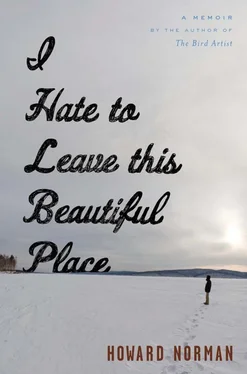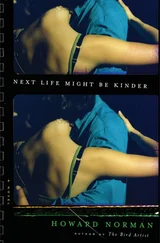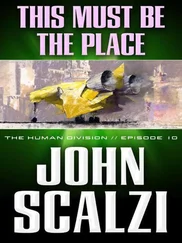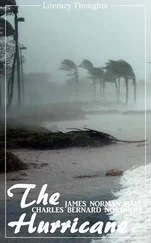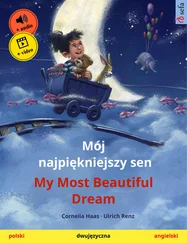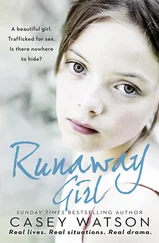But that morning of December 9, the world seemed haunted by radio, as the CBC, the BBC, and stations out of Vancouver, Amsterdam, London, Buffalo, and other locales continued to report the aftermath of John Lennon’s murder and played his songs. I asked Lucille Amorak if she had ever heard of John Lennon, and she said, “I heard about him from Peter. He played me some songs. He sang me some songs. I asked if this John Lennon would be visiting us, and Peter said no, he wouldn’t be.”
Before I left Eskimo Point, Peter announced that he needed to get down to New York and stand for a while in Central Park near the Dakota apartment building where John Lennon had been shot, “maybe even find some people to play Lennon songs with.” He had never been to a Canadian city before, let alone out of the country. He had gotten hold of a map of New York from the library in Churchill and drawn a circle around Central Park.
The ability of Nanook the Gook to make a living was restricted by the long winters — people in the far north didn’t travel much until late spring. Still, the band made a little money, and Tommy had previously saved some—“not much, but enough” to sponsor his journey to New York. I did not know the nature of his finances in detail, but he had his mind made up. Tommy had asked the rest of the band to go with him, but nobody else had any interest, and this caused a rift. I was scheduled to leave from Churchill on the Muskeg Express to Winnipeg; I knew that weather interfered with the train schedule and was prepared to wait at the Churchill Hotel. I remember hearing Peter say, “Sedna is really pissed off these days, eh?” Anyway, I was willing to sleep high up off the ground in the hotel.
But the day before Edward flew me to the Churchill landing strip — a brief jaunt for him, really — Peter insisted that I walk with him about a quarter mile out of Eskimo Point to a frozen marsh. It was cold as hell and I was fighting off the flu and hadn’t thought it too wise to accompany him, but he was carrying his electric guitar and a small amplifier with a battery wrapped in packing material to protect it from the cold, so my curiosity was up. I had no earthly idea what he had in mind and did not ask.
When we reached the marsh, a few ravens flew off and I looked out toward the center of an iced-over open area and saw a snowy owl; it was a big owl and did not move at all, except for a slight flutter of its wings and a subtle head-bobbing, its eyes not blinking but opening and closing with signal mysteriousness. The owl was almost camouflaged by the snow and snow light. Nonetheless, once you saw it, you could glance away and locate it again, because it had not moved an inch.
No words were exchanged between Peter and me. He removed the battery from its wrapping, set the wrapping down on the frozen ground, and put the battery on top. He plugged the guitar into the amp and the amp into the battery. He tuned up and made the guitar whine and echo, and he sang the opening bars of “Whatever Gets You Through the Night,” and I mean blasting it out over the tundra. Amid the piercing music the owl shifted only slightly and tucked its head deep into its breast and closed its eyes. This struck me as sad and comical and another of those things I cannot put words to.
“… through the night, all right, all right.” Peter had a voice that made Bob Dylan seem like Pavarotti, but what did it matter? With desperate, joyful abandon he shouted, “I got my Eskimo freak on!”—wildly gyrating in classic rock-star style, wailing. He was torn up inside, is what I thought. And I had never seen, up to then or since, tears actually fly from someone’s face. When he finished the song, in an exaggerated way he bowed to the owl and said to me, “I’ve played for this fellow eight or ten times, you know.”
I had heard that for well over a year Gabriel Alikatuktuk blamed the worst Arctic storms on Mark David Chapman, the sick creep who had murdered John Lennon, though he continued his tradition of blaming Inuit people for trespasses and violations, too. (In fact, it was on his radio broadcast that I first heard assertions about air pollution causing climate change, which agitated Sedna almost beyond imagining.) I never saw Peter again, but did learn that he eventually made his way to New York in December of 1981, in time for the first anniversary of John Lennon’s death, and got to play Lennon songs with musicians and singers in Central Park across from the Dakota. Edward said that his son had “got all caught up” in the city for the rest of that winter. Early in the summer of 1982, Peter had traveled by bus and apparently for days on foot to Flin Flon, Manitoba, and from there his father flew him back home to Eskimo Point. Edward said that almost immediately upon his son’s return, “spirits started using him.” I did not understand the full context of that phrase, but I knew it referred to malevolence. The way Edward put it was, “Peter was done in.”
Though I once entertained the idea of writing a musician’s biography of Peter, the fact is that for years I had no notion of his situation or his whereabouts, nor did I seek any of it out. I can only claim the slightest knowledge of his life after I saw him play “Whatever Gets You Through the Night” on that bone-chilling bright day outside of Eskimo Point. But when I returned to that village a few years later, one of Peter’s cousins suggested that I walk to the old Eskimo cemetery and find Peter’s grave. Naturally I did that. On his grave marker, a simple wooden cross, with his name and the years of his birth and death, it read: Nobody Told Me There’d Be Days Like These.
I ended up writing a reminiscence based on journals I had kept in the late 1970s when I was working in Churchill, Manitoba, and had met one of the most inimitable personages in my life, a woman named Helen Tanizaki; the book was called In Fond Remembrance of Me. Helen introduced me to many of the things that have sustained me since: Japanese literature; an appreciation of the way the skewed order of events and uncanny narrative strategies and — wildness of incident in Arctic folktales — organized one’s emotions in a different way than Western, beginning-middle-end stories did; and the habit of keeping a notebook and journal, which may sound obvious but wasn’t to me at the time. And Helen was the first person I had ever known who was tossed and turned by self-inflicted theosophical arguments — a mixture of Buddhism and what she called “handmade” theories of predestination and the afterlife, things like that. She didn’t have much longer to live — she had stomach cancer when I knew her — and spoke of her haunted preoccupations with an honesty and directness I had not previously experienced. I don’t want to sentimentalize our few months of proximity to each other — she was working in translation, too, at a much higher level than I was capable of — and I tried very hard to tell things straightforwardly in In Fond Remembrance of Me —but forty-some years later, her belligerent and graceful sensibility and her spiritual intensity provide a template for what is possible in a life.
You might say that my time in the Arctic was an apprenticeship, for writing and thinking and even for attempting to keep certain aspects of the past as close at hand as humanly possible.
In late spring of 1981, I went to yet another Eskimo village, Pangnirtung, in the Northwest Territories, to record folktales. Suffice it to say that I was pleased to have the employment, given the fact that I still had no career to speak of and was financially at loose ends. My Pangnirtung notebook was titled “Horizon/Fear,” because the stories I worked with there were about threatening entities — horrendous spirits, malevolent weather, terrifyingly strange beasts — appearing on the horizon. Simply put, the repertoire of spirit beings seen on the horizon in those folktales was truly prodigious and disturbing.
Читать дальше
